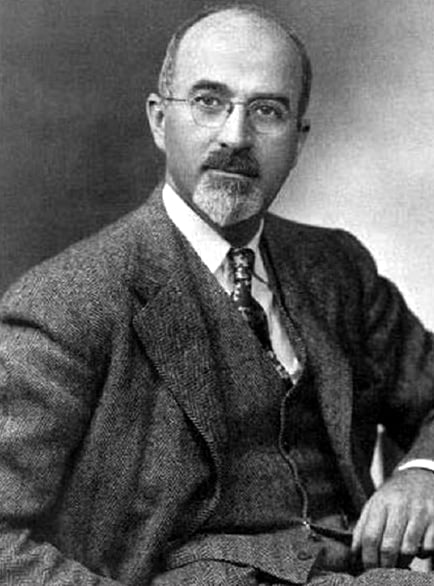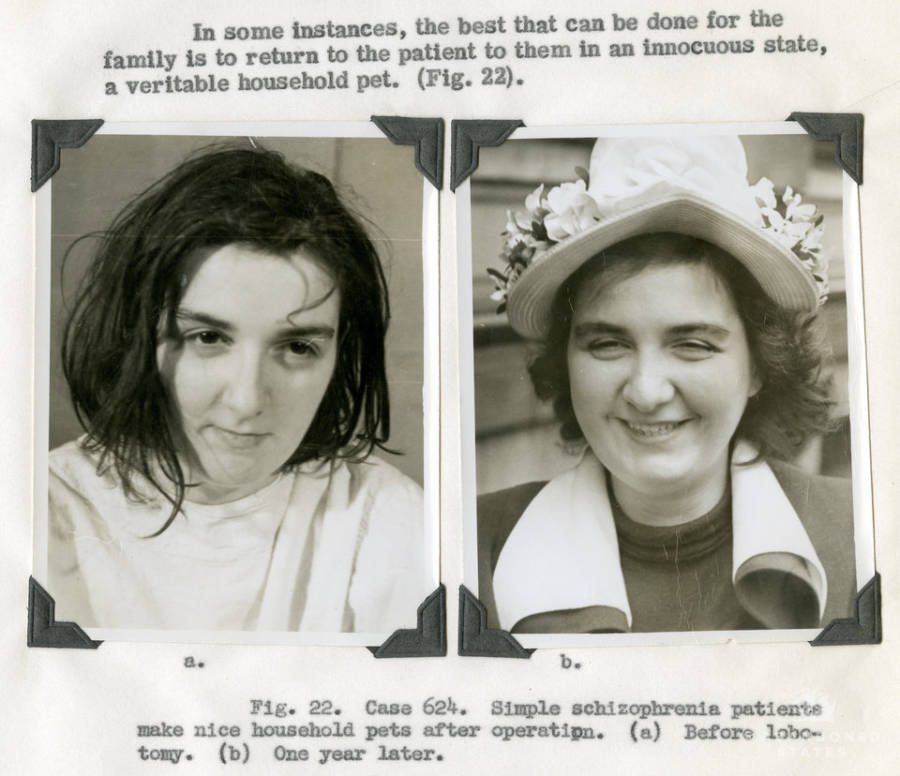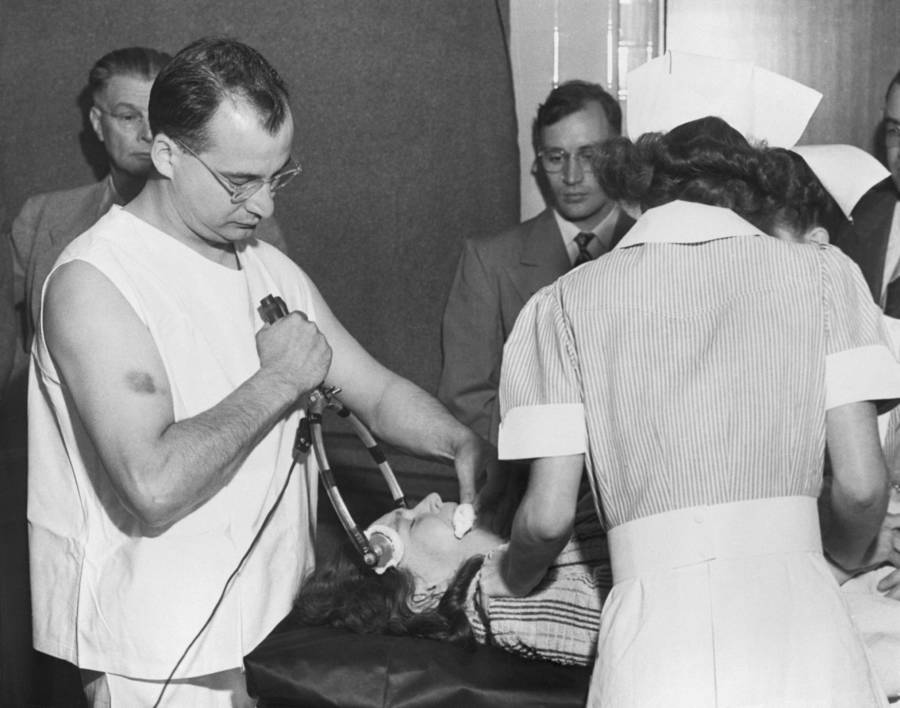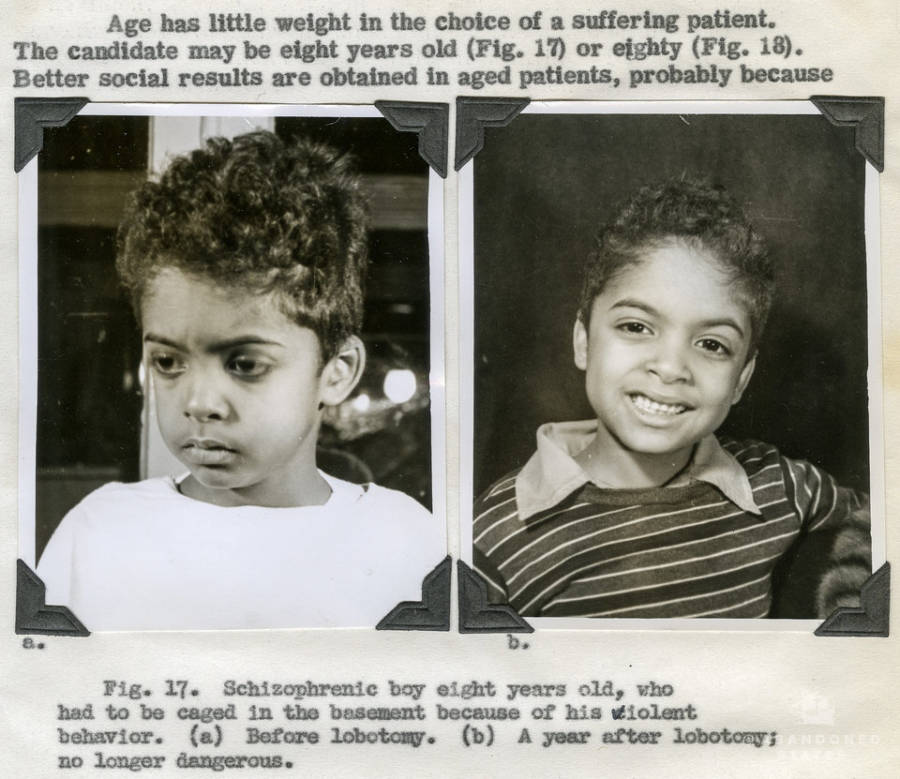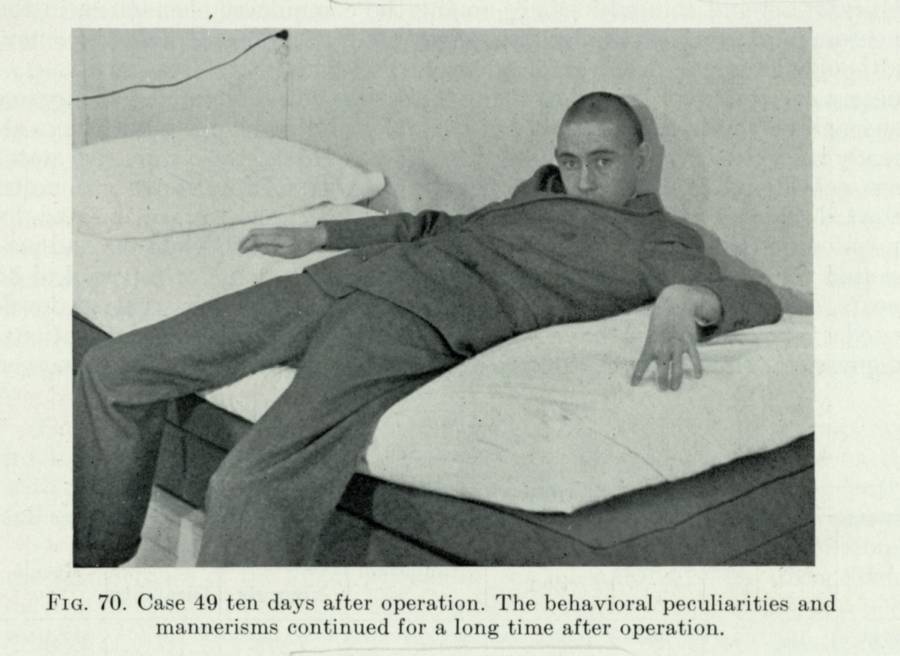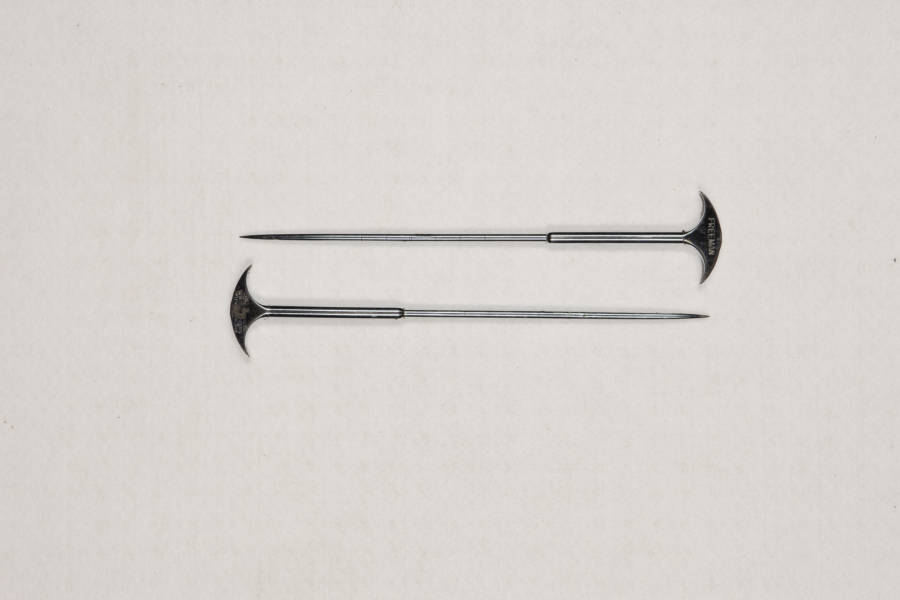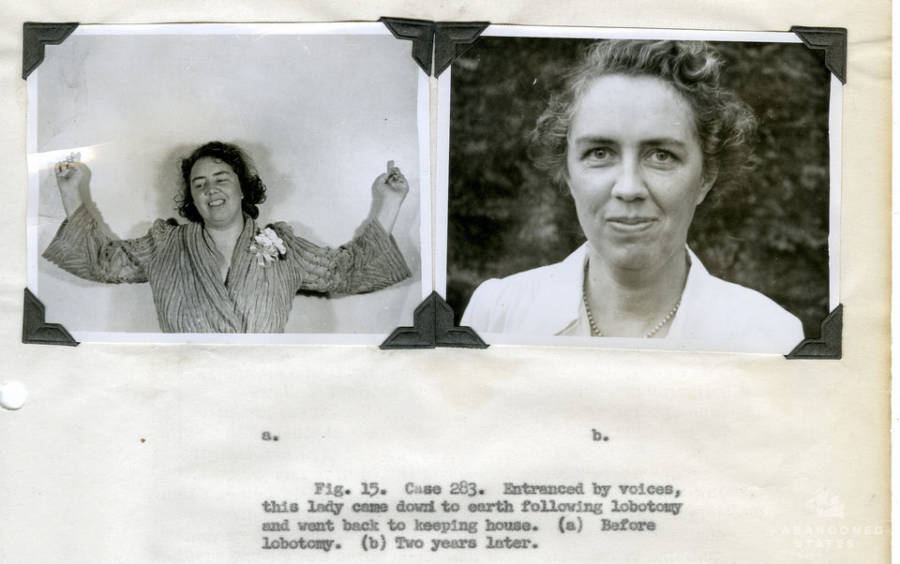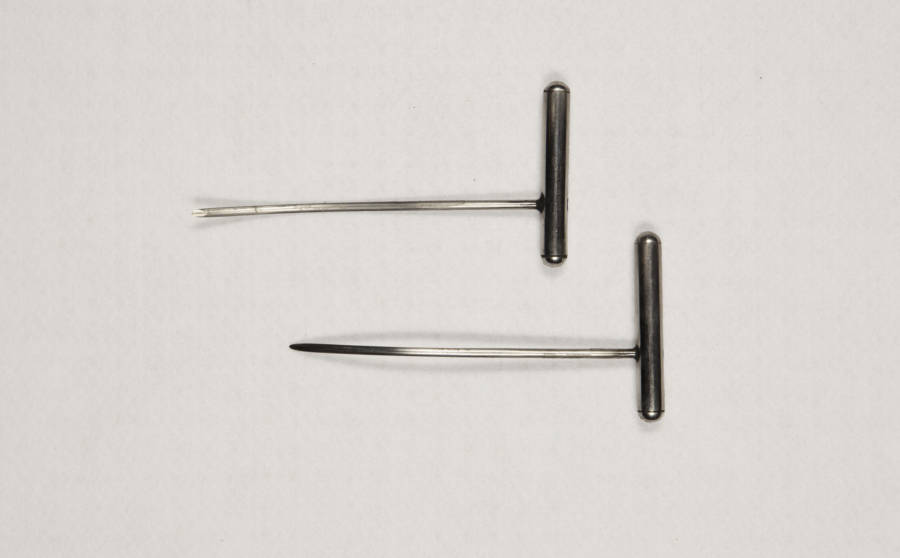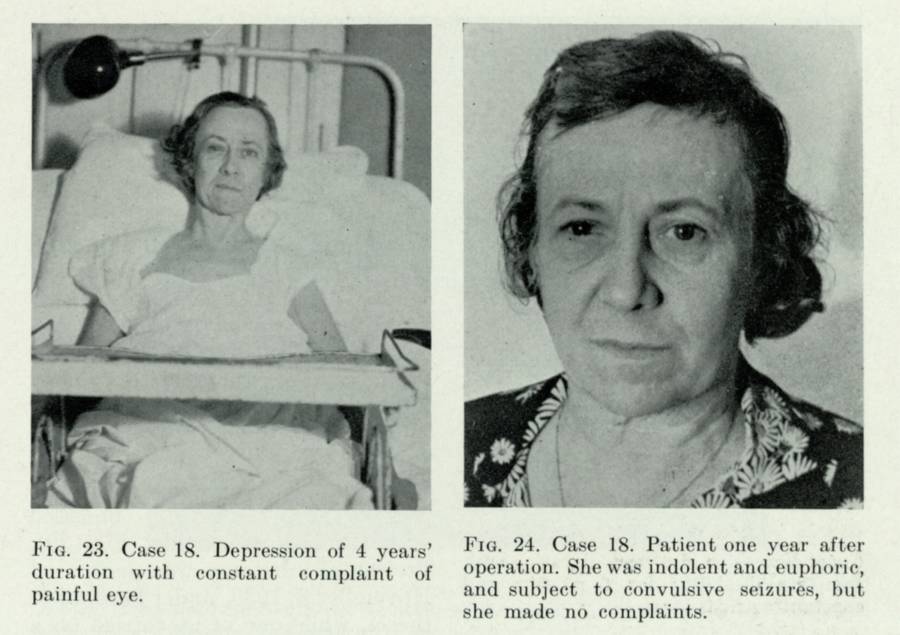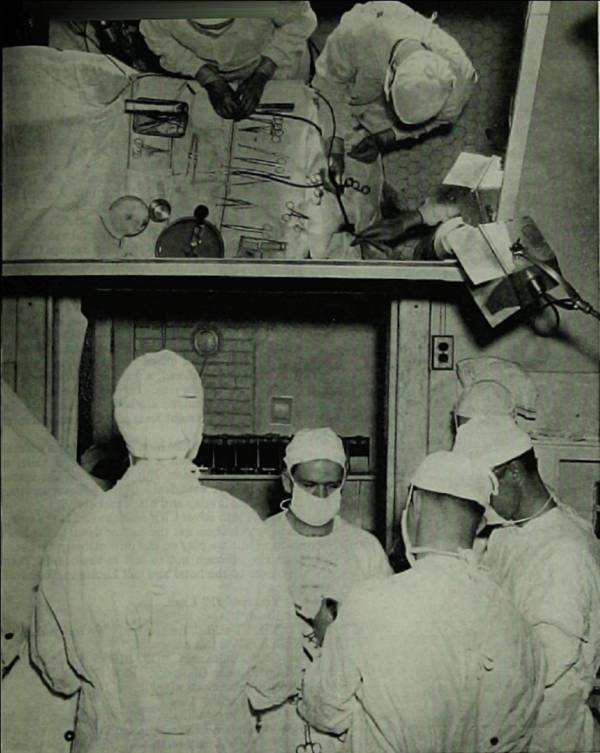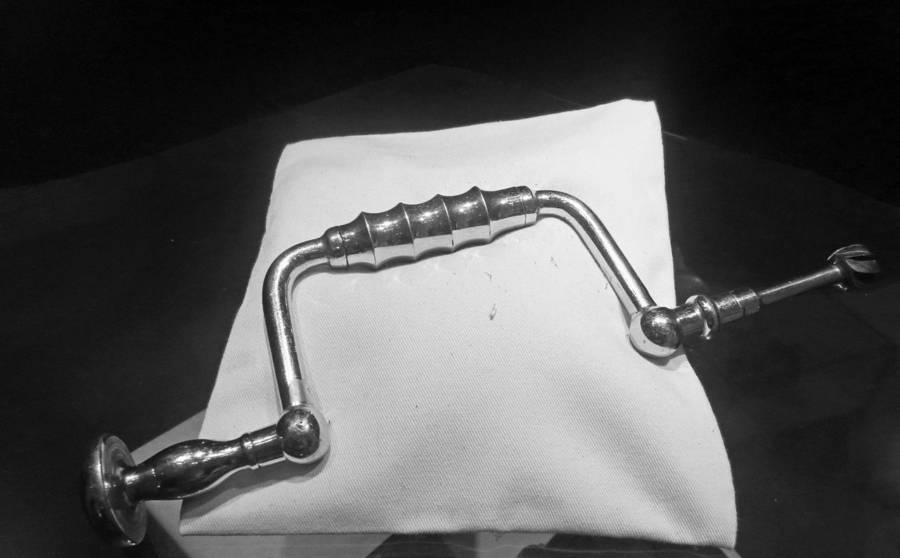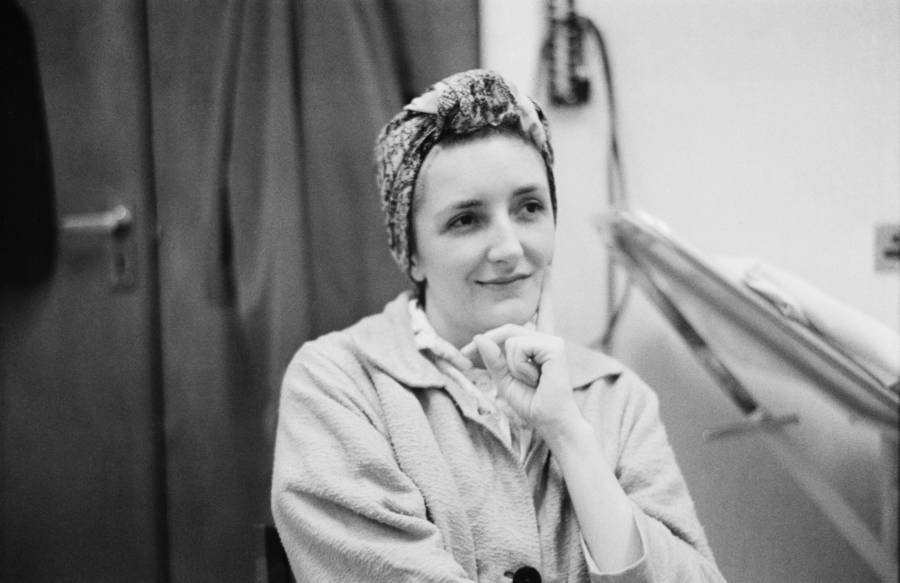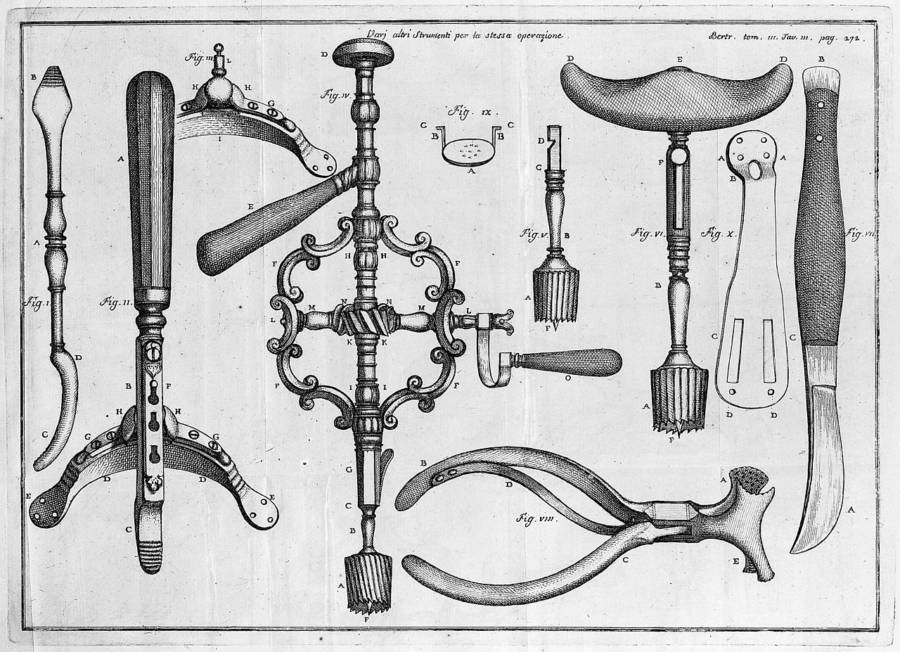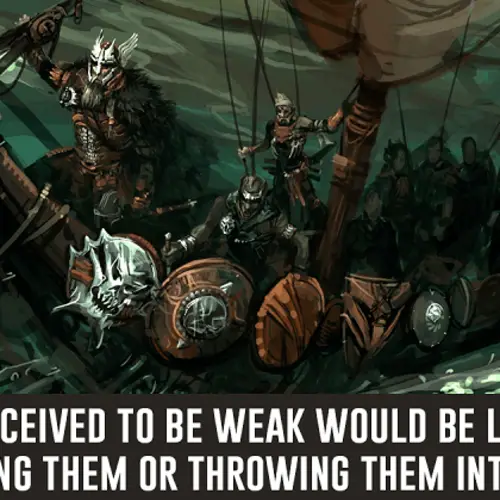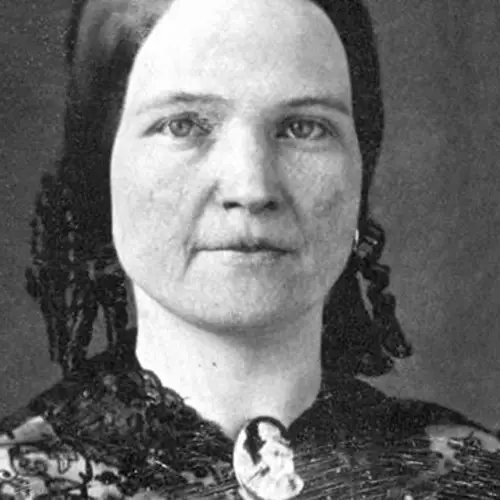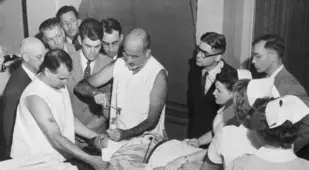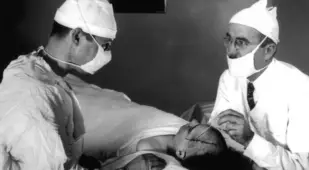While Walter Freeman has become infamous as the doctor behind the lobotomy, these photos reveal how misunderstood his story and the procedure really is.
The procedure was simple.
The doctor would first administer a local anesthetic, leaving the patient conscious and alert for what was to come (if the patient didn't respond to anesthesia, doctors would use electroshock). Next, the doctor would position a sharp steel pick of seven or so inches with its point underneath the eyelid and against the bone atop the eye socket. Then, with a swing of a mallet to the butt of the pick, the doctor would drive the point through the bone, past the bridge of the nose, and into the brain.
Once the point was about two inches deep into the frontal lobe, the doctor would rotate it, severing the connective white matter between the prefrontal cortex — the executive center that makes decisions, informs personality, and makes you who you are — and the rest of the brain.
The entire procedure took the doctor less than ten minutes, and the patient would never be quite the same again.
The doctor, much of the time, was Walter Freeman and the procedure was the transorbital lobotomy.
And just as Freeman — known for singing the gospel of his procedure and demonstrating it publicly with a showman's flair — has long been history's most infamous lobotomist, the transorbital lobotomy — known as the "ice pick lobotomy" for the tool with which it was developed and the nearly identical tool with which it was performed — remains the most infamous of its kind.
Moreover, the lobotomy in its many forms remains among the most infamous medical procedures in all of human history.
And why exactly the lobotomy, despite its use for just 30 years over half a century ago, retains such infamy and morbid fascination comes (at least in part) because of its barbaric simplicity.
Archivist Lesley Hall of London's Wellcome Collection of medical history told the BBC of the procedure, "It's not rocket science is it?" Another doctor described the lobotomy to the BBC as "putting in a brain needle and stirring the works."
Indeed, it is at once baffling and horrifying to comprehend that a trained medical doctor of the not-so-distant past would treat the most sophisticated part of the body's most sophisticated organ by simply jamming an ice pick into it.
Yet, from the mid-1930s into the mid-1960s, operating largely out of Washington, D.C.'s George Washington University, that is precisely what Walter Freeman did over 3,400 times.
Despite its 14 percent fatality rate and the fact that Freeman had no formal surgical training, Freeman and the procedure rose to prominence in the 1940s across the United States where some 50,000 procedures were performed, and Europe, which saw at least as many.
Some of these procedures involved Freeman's transorbital method, while many others involved the prefrontal method of drilling holes into the skull, at which point doctors could destroy the brain's white matter with either the injection of alcohol or the twist of a leucotome, a sharp tool ending in a wire loop that could essentially scoop out cerebral tissue.
These two methods were the ones initially preferred by António Egas Moniz, the Portuguese doctor who first developed the modern lobotomy in 1935.
Building upon similar procedures performed on both humans and animals by various doctors across Europe over the preceding half century, Moniz codified the approach, published his results, traveled abroad to spread the word, and ultimately directly inspired Walter Freeman to take up the cause.
But why? Why did Moniz develop the lobotomy, why did Freeman follow in his footsteps, and why did countless other doctors follow in Freeman's? Moreover, why would this be allowed for the patients who were subjected to it unwillingly or unwittingly, and why would the remainder of the patients undergo it voluntarily? What, in other words, was the point of the lobotomy?
The definitions of when the lobotomy should be used were just as graceless as the procedure itself. Doctors would perform lobotomies on patients diagnosed with everything from mild depression and anxiety to severe psychiatric disorders like schizophrenia.
In short, medical experts at the time viewed it as a "surgery for the soul," one which could treat everything from mild depression to schizophrenia.
This simplicity helped propel the procedure into the mainstream and the public consciousness, with Freeman receiving spreads in the Saturday Evening Post and traveling the country to evangelize on behalf of his procedure and Moniz receiving a Nobel Prize for it in 1949.
But just as this public awareness encouraged some people to volunteer for the procedure, it also invited backlash.
The public took note that while the lobotomy often did calm the anxious mind, it sometimes took things too far. "I was in a mental fog," said Howard Dully, who underwent a lobotomy at age 12 in 1960 and wrote a book about it in 2007, of the aftermath of his procedure. "I was like a zombie."
For some, that feeling dissipated with time. For others, it didn't.
Such cases, like that of Rosemary Kennedy, the sister of John F. Kennedy, became cautionary tales and informed the legacy of the lobotomy in ways that persist to this day.
Rosemary had suffered from developmental disabilities ever since birth, when the doctor wasn't available right away and the attending nurse instructed Rosemary's mother to keep her legs closed and the baby inside until the doctor arrived. Rosemary's head stayed inside the birth canal for two hours, depriving her of oxygen and leaving her disabled for life.
While that life would last a full 86 years, the last 60 would be spent inside various institutions with Rosemary a shell of her former self. In 1941, following years of seizures and violent outbursts amid what was otherwise a fairly normal existence, Kennedy patriarch Joseph took his 23-year-old daughter to Walter Freeman.
She was never the same again. In fact, she was far worse: Rosemary lost the use of one arm, one of her legs, her speech became largely unintelligible, and she had "the mental capacity of a two-year-old."
Although there are indeed records of successful, or at least incident-free, lobotomies in as many as two-thirds of cases, the ones like Rosemary Kennedy's or actress Frances Farmer's (which may not actually have happened) or Randall P. McMurphy's (which only happened in novel and film) are the ones that we remember.
The very simplicity and inexactitude of the procedure meant that sometimes it indeed brought disaster — live by the ice pick, die by the ice pick.
And that's precisely how it went with Walter Freeman. When a patient died on his operating table in 1967, he was stripped of his license. Moreover, by that point, both psychiatry and psychopharmacology had obviated the need for psychosurgery like the lobotomy. Its heyday was over.
Yet, the lobotomy's place in the public imagination would only grow, and darken, as true stories like that of Rosemary Kennedy's came to light and invented stories like those in One Flew Over The Cuckoo's Nest and The Bell Jar fascinated readers.
Today were thus left with a twisted albeit incomplete view of a procedure whose legacy isn't as simple as the procedure itself ever was.
After this look at Walter Freeman and the history of the lobotomy, read up on tragic actress Frances Farmer, one of history's most infamous disputed lobotomy recipients. Then, discover five bizarre, grotesque historical "cures" for mental illness.


